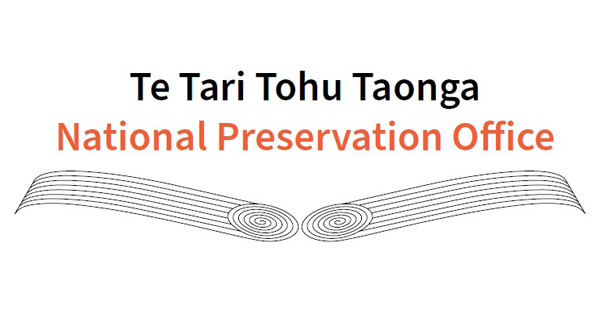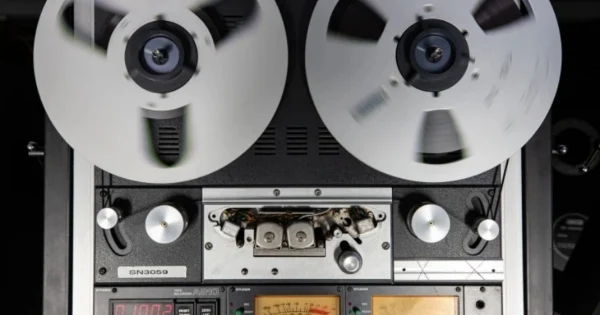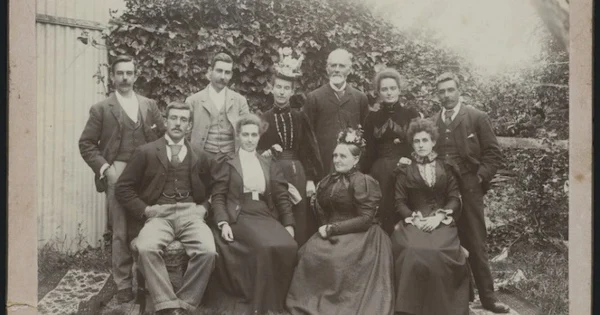
Sound recordings
Sound recordings may start to deteriorate within a few years if they are not cared for. Here are things you can do to preserve them.
Sound recording formats
Most sound recordings are likely to be on disc or tape. Discs include compact discs (CDs) and grooved recordings (records). Grooved recordings include 45s and LPs made from vinyl and 78s made from shellac.
Tapes include cassettes, reel-to-reel recordings and videos. These are often referred to as magnetic tapes as they contain a plastic film that is coated with a magnetic material.
Handling sound recordings
Handling is a major cause of damage to sound recordings, so it is important that they are handled as little as possible and that they are always handled gently.
CDs and DVDs
Handle CDs and DVDs carefully, as flexing, bending or applying pressure will cause damage. Be aware that both sides of a disc are vulnerable to damage.
Records
Handle records by their outer edge only. Avoid flexing or bending them or applying any pressure. The grooves on records are easily scratched and even tiny scratches cause hissing and crackling when the record is played.
Tapes
The surface and edge of the tape in cassettes and videos is easily damaged and so the tape itself should never be touched.
It is important to handle reel-to-reel tapes by the centre or hub. Reel-to-reel tapes are more at risk than other tapes, as they are not protected by a case.
Playing tapes
Repeated use of tapes will cause wear and damage. Handle and play original recordings as little as possible.
Avoid pausing tapes as this causes stress and damage to the tape. Going from rewind to fast forward without pushing stop will also cause tension and damage.
Store cassettes and videotapes in a fully rewound state to avoid creating tension at one point of the tape.
Storing sound recordings
Sound recordings are damaged by dust, heat, light, moisture and magnetic fields. The best place to keep them is somewhere cool, dark, dry and well ventilated, such as a cupboard or shelf.
Keep sound recordings:
off the floor
where they will not be constantly handled or disturbed
away from sources of light, heat and water.
A collection of sound recordings can be heavy so make sure that they are stored on strong and secure shelving.
CDs and DVDs
Keep discs in their plastic cases when not in use. Replace broken cases with new ones. Put discs straight back into their cases when you have finished listening to them.
Store CD cases upright in the same way books are stored on a shelf. Storing discs flat will cause them to warp over time. Store discs in the dark, as they are light can damage them.
Check discs for damage at least once a year. Look for any of the layers coming apart in the disc itself and check that you can still play the disc.
Label discs with their contents. Having a lot of discs that are not labelled increases the risk of them being lost or excessively handled. The outside case can be easily labelled. Be careful when labelling the discs themselves, as they are easily damaged.
Don’t:
use self-adhesive (sticky) labels
use a pen or pencil, as the pressure of writing will cause damage
write on the recordable side of the disc
use a marker that has a strong smell, it probably contains a solvent.
Label discs with a water based permanent marker. Write on the label side of the disc in the centre, the area where the laser does not read.
Records
Store records in their sleeves standing up like books. They should be on a sturdy shelf and should be neither tightly packed nor slumping over.
If records are in cellophane sleeves, or the original sleeves are damaged, replace them with acid-free paper sleeves (available from conservation suppliers).
Tapes
Store tapes upright. Laying them flat will cause the tape to become distorted. Avoid stacking tapes one on top of the other, as this creates a lot of weight and
will damage those at the bottom.
Each tape should be in an individual box and both the tape and the box should be labelled with the contents of the recording. Ensure cassettes and videos are stored fully rewound.
Magnetic fields can erase the content from tapes. Store tapes away from anything that can create magnetic forces, including TV sets, computers and other electrical appliances.
Caring for sound equipment
Equipment used to listen to and produce sound recordings needs to be kept in good working condition. Be gentle with your recording and playback equipment and follow manufacturers’ instructions when it comes to care and cleaning.
Copying sound recordings
Making a copy is often the best option for preserving a sound recording. The benefits of copying include:
reducing wear on the original
creating extra recordings in case of a disaster or theft
creating new copies in formats that can be played on current equipment.
For unique sound recordings, it’s a good idea to have a master copy and a listening or viewing copy. The master copy should be to the best standards possible, and used only if it is needed to produce another copy. Keep the two copies in different buildings to reduce the chance of the recording being destroyed in a disaster.
Copying sound recordings is a time-consuming and technical process. The work often needs to be done by a specialist company, and can be expensive. You may want to consider applying for funding for a copying project. There are a number of agencies that grant funding for such projects.
Information about funding agencies
Only use a reputable company for making copies. The National Preservation Office can provide a list of specifications on minimum copying requirements.
Keeping up with changing technology
As technology advances it may be difficult to find the appropriate equipment to listen to sound recordings. For example, many sound recordings are on reel-to-reel tapes but few people have a reel-to-reel player to listen to them on.
Reformatting, or copying a recording into a current format (e.g. copying a reel-to-reel recording to a CD), means it can be played on current equipment.
Digital technology is becoming increasingly popular for reformatting sound recordings. Digital has many advantages but the original recording may still last longer than the digital copy. It is important to always keep the original.
Making new recordings
The best time to start thinking about the long-term preservation of a recording is when you are creating it. If you are carrying out an oral history project or
recording an event, use the best equipment and techniques available.
Some tips when creating a new recording:
use a brand new tape each time you make a recording
inspect tapes and recording equipment to make sure they are in working order before use
treat the recording equipment with care and follow the manufacturers’ instructions
use an external microphone and eliminate background noise as much as possible
keep the tape in its container at all times unless you are actually recording
protect recordings and equipment from being dropped
label all recordings immediately.
Preventing damage from disasters
Be aware of which recordings in your collection are irreplaceable. The only copy of a precious waiata (song) or oral history recording is a greater priority than a commercially available CD of music. Copy precious recordings and store the copies in a separate building.
Fire is a great threat to sound recordings. Install smoke alarms to reduce the risk of fire, and sprinklers where possible. Contact the New Zealand Fire Service for guidance on fire safety issues.
Water will damage your sound recordings. It can deform them and mould can develop in as little as 24 hours. Reduce the risk of water damage and flooding by storing collections in cases or boxes, and keeping them off the floor and away from sources of water.
Contact a conservator if collections are damaged, as they may still be salvageable. A list of conservators is available on the New Zealand Conservators of Cultural Materials Pu Manaaki Kahurangi website.
New Zealand Conservators of Cultural Materials Pu Manaaki Kahurangi website
New Zealand Fire Service website
Need help?
Sound recordings are easily damaged, but by taking precautions you can extend their lifetime. You can get more detailed professional advice in caring for your audio recordings from the National Preservation Office.
Email — preservation@dia.govt.nz
Phone — 04 474 3000
Related content

Help from the National Preservation Office
Find out how the National Preservation Office can help you. There is also a list of other conservation organisations and services that may be of assistance.
Digitisation of heritage audio collections
Find out about digitising heritage audio collections for access and preservations.
Family collections
Family collections often consist of precious but fragile items: letters, newspaper collections, certificates and scrapbooks. This guide gives advice on protecting these collections.Feature image at top of page: Gramophone turntable, evening post photographer,
1950. Ref: 114/212/16-G. Alexander Turnbull Library.